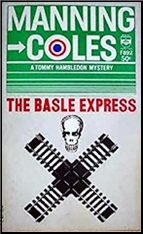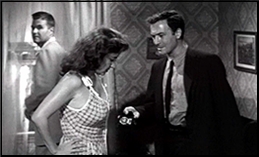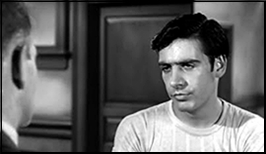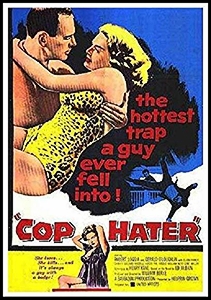FIRST YOU READ, THEN YOU WRITE
by Francis M. Nevins
Dashiell Hammett is universally acclaimed as the founding father of hard-boiled or what is now called noir crime fiction. I know that Carroll John Daly (1889-1958) entered the field shortly before Hammett, and that his earliest novels predated Hammett’s by a few years. But almost a century after both men began, Daly’s output does not hold up well by comparison, and I don’t have enough years left to explore it in detail. How about the first significant writer who followed in Hammett’s footsteps?

Raoul Whitfield (1896-1945) was born in New York City, distantly related to Andrew Carnegie through the great industrialist’s wife. His father, a federal civil servant, was assigned to Manila as an accountant shortly after the Spanish-American War, so that Raoul grew up in the Philippines. As a young man he moved to Hollywood and is reported to have appeared in uncredited bit parts in silent movies. Upon the U.S. entry into World War I he enlisted and was trained as an aviator. Apparently his main overseas jobs were shuttling cargo to the front lines in France and towing targets for aerial gun practice, although he claimed heavy air combat experience.
After the war he settled in Pennsylvania and worked as a laborer in a steel mill, as a bond salesman, and (maybe) as a reporter for the Pittsburgh Post. He married his first and longest-lived wife, the former Prudence Ann Smith (1895-1990), in April 1923.
Apparently his first short story was “The Pin†(The Cauldron, December 1922), which was reprinted in Ellery Queen’s Mystery Magazine for April 1985, a few years after Fred Dannay’s death, but it wasn’t until 1924 that he started turning them out like bratwursts in a sausage factory, mainly for pulps like Breezy Stories, Droll Stories and Street & Smith’s Sport Story.

He made his first sale to Black Mask in 1926, with most of his early tales in that iconic magazine being air combat adventures, a genre he claimed to have invented, but within a few years his interests turned to combat between tough guys on terra firma. Once having gotten his feet wet in this new body of water, he became a staunch admirer of Hammett, who’d been swimming in it for about four years before him. They corresponded for a while before finally meeting in Hammett’s San Francisco stamping grounds, and thereafter they met periodically, downing oceans of bootleg liquor on every occasion.
Hammett’s RED HARVEST had already appeared both in Black Mask (November 1927-February 1928) and as a novel (Knopf, 1929), and THE MALTESE FALCON in serial form (Black Mask, September 1929-January 1930), when Whitfield made his hardcover debut with GREEN ICE (Knopf, 1930), based on five Black Mask stories (December 1929-April 1930) and issued by Hammett’s own publisher at Hammett’s suggestion.

There’s no private eye in the book, no one comparable to the Continental Op or Sam Spade. Released from Sing Sing after serving a two-year stretch for a vehicular homicide committed by his girlfriend, Mal Ourney (who to my mind would best have been played onscreen by Richard Dix, the star of several early-talkie crime movies) resolves to devote his life and inherited bankroll to wiping out the “crime-breeders,†the big-shot criminals who ensnare, frame and ruin the lives of little crooks.
His girlfriend comes up to Ossining to reunite with him — or perhaps for a more sinister reason –– and is promptly shot to death, the first of a huge assortment of violent ends that stud Whitfield’s pages, at least a dozen in all and seven of them before the end of Chapter Five. The impossible-to-keep-straight plot involves a host of ruthless characters in pursuit of a fortune in emeralds which turns out to be — well, remember what Hammett’s black bird turned out to be?

Events begin in Ossining just outside of Sing Sing but soon move to Manhattan and then to Pittsburgh (the dirty burg, Whitfield calls it) and its suburb Duquesne. The steel mill stench is everywhere. “Red flames streaked up into the sky from the plant stacks. Red smoke hung low. The air was heavy, thick with steel grime.†Ourney gets beaten up and blackjacked at least once too often and grins a lot more than a noir protagonist should. And I do get tired of his using human as a synonym for man or person.
Dot Ellis got more space than most of the other humans. But there was one human that grabbed the headlines.
“[W]hoever did—that human knew her well enough to know she was left-handed.â€
“….I got the idea that just a few humans were using a lot of other humans as they wanted, then framing them, smashing them—rubbing them out….â€
Until the middle of Chapter VIII Ourney takes it for granted that the black bird of this book is in the form of cash. Then he makes what he himself calls “a blind guess†and says: “Somebody’s after something, but it isn’t a hundred grand. It isn’t fifty grand. Maybe it’s stones.†As indeed it is. Surely Hammett would have found a more elegant way of putting his protagonist on the right track.
But the book is still readable almost 90 years after its first publication, although clearly not in the same league with Hammett’s classics. Considering the Black Mask serialization dates of all three novels, any similarity with RED HARVEST and THE MALTESE FALCON that one may find in GREEN ICE can hardly be coincidental.

Whitfield’s second novel, DEATH IN A BOWL (Black Mask, Sept-Nov 1930; Knopf, 1931), is a genuine PI exploit set in Hollywood, with a convincing background of the movie industry at the dawn of talkies and a relatively small cast of characters compared with the hordes that populated GREEN ICE. After screenwriter Howard Frey knocks out German émigré director Ernst Reiner while a tense scene is being shot, both men approach Hollywood PI Ben Jardinn, with Reiner claiming Frey is out to kill him and Frey insisting that the director wants to frame his scenario man in case he’s killed by someone else.
The actual murder takes place the following evening at a Hollywood Bowl concert attended by some 12,000 people — including Reiner, Frey and the tempestuous star of Reiner’s movie — and conducted by Reiner’s illustrious brother. In the middle of a thunderous tone poem the Bowl lights suddenly go out, a tri-motored plane buzzes the field with its engines roaring, and the conductor is shot in the back four times, although later Whitfield changes his mind and tells us there were only two bullets in the body.

Except for a plane-crash death and a second murder, not all that much happens in the remainder of the book beyond a constant stream of characters lying to and double-crossing one another, bringing home to us the quintessential noir insight that you can’t know or trust anyone, not even yourself.
The climax is a somewhat creative variant of THE MALTESE FALCON’s you’re-taking-the-fall-baby denouement — although not in the same class with the twist Erle Stanley Gardner pulled off in the first Perry Mason novel, THE CASE OF THE VELVET CLAWS (1933) — and the style is ersatz Hammett all the way. In both narrative and dialogue “human†is used as a substitute for “person†so often it becomes silly.
….[A]ll humans were difficult to work with….
Humans were still pouring into the Bowl.
The roar of the plane’s engines filled the bowl of humans.
Humans were surging from the grass before the shell….
The police are yelling that I caused an important human to get himself quieted….â€
“….The bushes are tall enough to hide a human.â€

Whitfield didn’t have anywhere near Hammett’s success in Hollywood. Movies were made out of none of his novels and only one short story (“Man Killer†from the April 1932 Black Mask, which was filmed as PRIVATE DETECTIVE 62, Warner Bros., 1933, starring William Powell) but, judging from DEATH IN A BOWL, he seems to have absorbed quite a bit of the early-talkie Hollywood atmosphere, with the director filming a scene required to stay in a sound booth looking down on the stage below.
The autocratic director character Ernst Reiner was clearly modeled on the great German film-maker Fritz Lang (1895-1975), who in fact was still working in Germany in the early 1930s and didn’t move to the U.S. until a few years later, after Hitler came to power.
Anyone who wants proof that Lang was on Whitfield’s mind need only look at what Ben Jardinn has to say about Reiner’s movies. “They show a good deal of imagination. Cities of the future, and that sort of thing….†(8) What is this but an unmistakable allusion to Lang’s 1926 masterpiece METROPOLIS? Long before anyone ever heard of the auteur theory, Whitfield has no doubt who holds the power in the film world. “Most directors are more important than writers.†(7)
Whatever its weaknesses as a detective novel, DEATH IN A BOWL is redeemed by moments like these.
TO BE CONTINUED NEXT MONTH…






